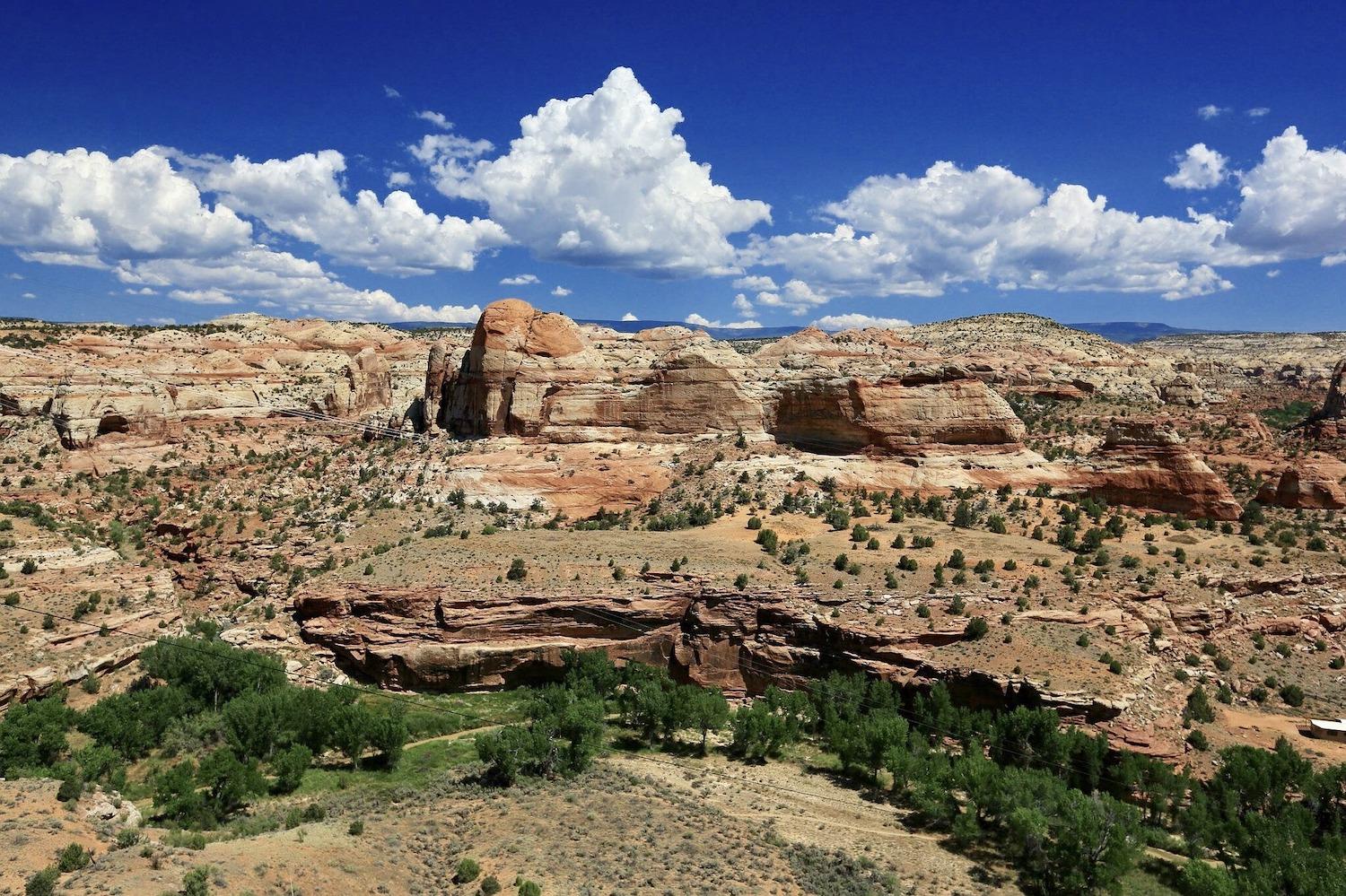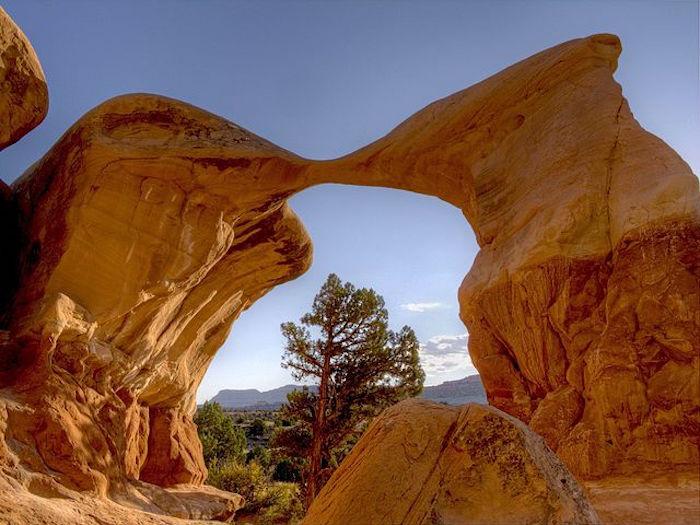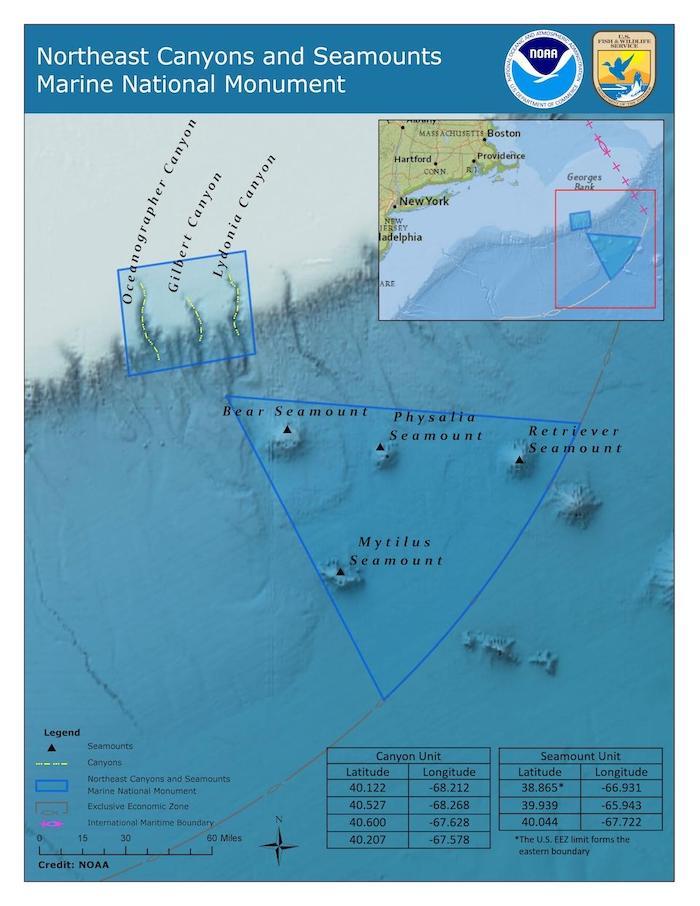
Reaction to President Biden's decision to restore the original boundaries for Grand Staircase-Escalante (above) and Bears Ears national monuments in Utah was predictable/Vit Ducken via Pixabay
Reaction To Biden's Move To Restore Original Boundaries To National Monuments
By Kurt Repanshek
Reaction to news that President Biden was restoring the original boundaries to two national monuments in Utah and one off the coast of New England was predictable, with tribes, conservationists, and environmentalists applauding the move, and Utah politicians highly critical of the decision regarding Bears Ears and Grand Staircase-Escalante national monuments.
The Biden administration said Thursday night that the president would sign three proclamations Friday to restore the monuments' original boundaries and protections. The move was both to keep a promise to restore the boundaries and also to uphold "the longstanding principle that America’s national parks, monuments, and other protected areas are to be protected for all time and for all people," the White House said.
The Bears Ears Inter-Tribal Coalition, comprised of delegates from the Hopi Tribe, Navajo Nation, Ute Indian Tribe, Ute Mountain Ute Tribe and the Zuni Tribe, hailed the news.
"By taking this action, President Biden will be recognizing the deep and enduring ancestral and cultural connections that tribes have to this landscape and taking a step toward honoring his commitment to Indigenous people by acknowledging their original place in this country that is now our shared home," the organization said. "The Bears Ears Intertribal Coalition looks forward to the president’s continued leadership in ensuring that a new model of collaborative management between the tribes, state and federal land agencies is immediately put into action and that a comprehensive Land Management Plan can be developed for the greater Bears Ears landscape. In this new model, the traditional knowledge and place-based conservation strategies of tribal communities will play a significant role in shaping efforts to conserve and plan a resilient future for this landscape that we all hold dear."
The Monuments
Bears Ears National Monument was established by President Obama in 2016 under The Antiquities Act following years of advocacy by numerous tribes with cultural ties to the land. The Bears Ears Inter-Tribal Coalition advocated successfully to protect the cultural, historic, and natural values of the monument. The monument is home to multiple culturally significant and archaeological sites dating as far back as 11,000 BCE. The land is still used today by tribal members, who continually visit it to conduct religious ceremonies and other traditional practices.
The 1.9-million-acre Grand Staircase-Escalante National Monument, designated by President Clinton in 1996, is extremely rich in paleontological resources, with nearly 150 scientists having said the monument “hosts one of the highest concentrations of dinosaur fossils in the world,” and that only 6 percent has been surveyed, and that “the potential for future discovery is tremendous.”

Metate Arch In Grand Staircase-Escalante NM/John Fowler
Trump cut Grand Staircase by a bit more than 1 million acres and broke it into three monuments known as Grand Staircase, Escalante Canyons, and Kaiparowits. Bears Ears shrank to a bit more than 201,000 acres in the Indian Creek and Shash Jáa units from its original size of 1.3 million acres.
Northeast Canyons and Seamounts National Monument was established by Obama in 2016. The monument spans nearly 5,000 square miles, an expanse larger than the state of Connecticut. It became the Atlantic Ocean's first national monument when Obama established it. According to the NOAA Fisheries, the monument "includes two distinct areas, one that covers three canyons and one that covers four seamounts. These undersea canyons and seamounts contain fragile and largely pristine deep marine ecosystems and rich biodiversity, including important deep sea corals, endangered whales and sea turtles, other marine mammals and numerous fish species."
Trump had gone to Bangor, Maine, in June 2020 to remove what he called a "no fishing sign" from the Northeast Canyons and Seamounts, a move hailed by the fishing industry. The former president said the fishing industry had been wronged by the Obama administration and the fisheries arm of the National Oceanic and Atmospheric Administration.
The industry representatives who attended the event said they long had been careful not to adversely impact ocean fisheries, pointing out that the area now covered by the monument had been fished for decades before environmental organizations urged Obama to protect the "pristine" area.
"We've been in there for 40 years," one man told Trump. "If the environmental groups can deem the place pristine, and we've been operating in that area for 40 years, and you can't find any evidence where we've done any damage, I would say we've been pretty good stewards."
More Reaction
“President Biden promised to restore protections to Bears Ears and Grand Staircase Escalante national monuments on Day One. Now, more than 200 days into his presidency, we’re glad that he’s taken action to keep that promise, returning protections to the first successful tribally-led national monument designation," said Judith LeBlanc, citizen of the Caddo Tribe of Oklahoma and director of the Native Organizing Alliance.
“Since President Trump slashed protections in 2017, these treasured and sacred places have been at risk. We celebrate this long overdue restoration and most of all we celebrate that these exceptional, sacred places and their cultural significance will no longer be threatened by vandalism and energy development," she added.

Opposing Biden's proclamation on Northeast Canyons and Seamounts was Saving Seafood, a commercial fishing organization.
"This is an unfortunate decision that is opposed not only by those affected in the commercial fishing industry, but by all eight fishery management councils and NOAA Fisheries,” Bob Vanasse of Saving Seafood told National Fisherman, a trade publication. “There is no scientific justification to prohibit commercial fishing while allowing recreational fishing. While the Biden-Harris Administration has claimed decisions will be based on science, and not on who has the stronger lobby, this decision shows otherwise."
National Parks Conservation Association President and CEO Theresa Pierno said Biden's decision "brings justice to the fight that brought us together with tribal nations, local communities and businesses, and countless people across the country" who opposed Trump's move to shrink the two monuments in Utah and lift protections from Northeast Canyons.
“President Biden’s plan to restore our national monuments is a testimony to tribal leaders and so many other partners who worked for decades to protect these places, then fought fearlessly over the last several years to restore them," said Pierno. "The outpouring of support for Bears Ears and Grand Staircase-Escalante is a loud and clear affirmation of the enduring values we share for our protected lands and waters.
“These national monuments are sacred spaces that provide healing and sustain life. They preserve troves of fossils and ancient artifacts that carry centuries of human history. They protect and connect one of America’s most iconic national park landscapes and vast marine ecosystems. And for nearly four years, they’ve been under attack, including being needlessly opened to free-for-all development," she added.
Phil Francis, chair of the Coalition to Protect America's National Parks, said “Utah’s incredible national monuments are critical cultural, historical, and environmental sites that are a core part of our shared national heritage. Protecting them is vital not only to the environment but to our collective history."
“With visitation to Bears Ears and Grand Staircase-Escalante increasing, today’s announcement of restored protections will help ensure the safety of our resources and offer a better experience for those who visit," he added.
Utah's congressional delegation, which didn't oppose Trump's move to reduce the size of Bear Ears and Grand Staircase or complain about the way he went about it, through the use of Executive Orders, condemned Biden's action.
“President Biden is delivering a devastating blow to the ongoing efforts by our delegation, along with state, local, and tribal leaders, to find a permanent, legislative solution to resolve the longstanding dispute over the boundaries and management of the Bears Ears and Grand Staircase-Escalante national monuments," the delegation said in a statement. "Rather than take the opportunity to build unity in a divided region and bring resources and lasting protections to sacred antiquities by seeking a mutually beneficial and permanent legislative solution, President Biden fanned the flames of controversy and ignored input from the communities closest to these monuments. We will continue to support efforts to ensure that our monuments’ boundaries and management reflect the unique stakeholder interest and uses in the area, but today’s 'winner take all' mentality moved us further away from that goal.”
At Grand Staircase Escalante Partners in Utah, Executive Director Sarah Bauman said the organization is "grateful for the restoration of Grand Staircase-Escalante National Monument as a connected and protected landscape. We also know that this is only the beginning of our work to ensure that this landscape — the first monument placed into the National Landscape Conservation System — is conserved, and its important science objectives, inclusive of Indigenous knowledge, realized. We look forward to working with tribal leaders, conservation partners, the Bureau of Land Management, local and state officials, and others to safeguard irreplaceable natural and cultural resources, conduct essential research related to biodiversity and climate change, and protect Grand Staircase in perpetuity.”
Now What?
Biden's actions settle the matter for today, though legal action to overturn his actions is almost certainly assured, just as Trump was sued when he altered the monuments' boundaries. That lawsuit, which argued that presidents lack the authority to overturn their predecessors' use of The Antiquities Act to establish national monuments, has been pending in federal court.
Whether that filing will now vanish remains to be seen, though another case that reached the U.S. Supreme Court earlier this year seemed to crack the door on a closer examination of the legal question of whether a monument could be reduced after its initial designation.
When the Antiquities Act was signed into law in 1906, it gave presidents power to create national monuments "which in all cases shall be confined to the smallest area compatible with proper care and management of the objects to be protected..."
You can go back, at least, to 1996, when Clinton designated Grand Staircase-Escalante National Monument, to find arguments over what constitutes the "smallest area compatible."

Indian Creek, Bears Ears National Monument/BLM, Bob Wick
That designation, of course, was met with an uproar from Utah's politicians and congressional delegation, an uproar that wasn't quelled until Trump in 2017 redrew the lines for Grand Staircase and Bears Ears. At the time, Trump maintained that Clinton and Obama "severely abused the purpose, spirit, and intent of a century-old law known as The Antiquities Act."
Trump's point likely will find its way into the court system and, if it reaches the Supreme Court, just might gain support there in light of a recent case brought by commercial fishermen who challenged the size of Northeast Canyons and Seamounts. Though it was derailed in March by the Supreme Court's decision not to consider an appeal from a lower court that in 2019 upheld the designation, Chief Justice John Roberts said part of the problem with the case was that the fishermen failed to explain what would be too big in designating a national monument.
"We have never considered how a monument of these proportions—3.2 million acres of submerged land—can be justified under The Antiquities Act. And while we have suggested that an 'ecosystem' and 'submerged lands' can, under some circumstances, be protected under the Act, we have not explained how the Act’s corresponding 'smallest area compatible' limitation interacts with the protection of such an imprecisely demarcated concept as an ecosystem," wrote the chief justice. "No court of appeals has addressed the questions raised above about how to interpret The Antiquities Act’s 'smallest area compatible' requirement. The D. C. Circuit ... held that petitioners did not plead sufficient facts to assess their claim that the monument swept beyond the 'smallest area compatible' with management of the ecosystem. To date, petitioners have not suggested what this critical statutory phrase means or what standard might guide our review of the president’s actions in this area."

Comments
That assertion is laughable on its face.
Glad to know that the $14 billion NP maintenance backlog has been resolved and the US Gov can begin the Utah land grab again.
Sure. So this wasn't federal property to begin with. And to think I thought these lands were under the control of the Bureau of Land Management and the US Forest Service. Silly me.
Where and what happened to the previous lawsuit filed in late 2017 regarding the reduction of these boundaries??? How far did this previous lawsuit go??? Would be nice to hear the Supreme Court rule on National Monuments as a whole. Is it presidential or a legislative action for any Monument??? Utah can file all the lawsuits it wants but it will take years to resolve in the courts if at all.
Joshua, as the story above notes, that 2017 has been pending in federal court. Whether the groups who filed it ask for it to be dismissed/withdrawn remains to be seen, though it would be nice to get a court ruling on whether presidents can reduce the size of a monument established in the past. It's rarely done.
Here's an excellent background piece on creating monuments and the pros and cons of what President Trump did;
https://www.nationalparkstraveler.org/2019/04/law-professor-enumerates-f...
The Supreme Court only rules on cases brought before it. Presidents use The Antiquities Act to designate national monuments, Congress can do the same, legislatively.
NRDC v. Trump was stayed after Biden's executive order on his first day in office that the decision would be reviewed. I think The Wilderness Society et al. v. Trump et al. was also stayed.
https://www.whitehouse.gov/briefing-room/presidential-actions/2021/01/20...
The NRDC website says that the Biden administration requested a stay because of this review and it was granted.
There's no controversy over whether or not Congress can name, rename, reduce, or rescind a national monument by passing a bill and having it go into law. However, most interpretations of the Antiquities Act are that the President only has the power to create (or enlarge) national monuments by fiat.
Kurt and YPW, I appreciate your responses. I would like to see this court case from the end of 2017 go all the way to the Surpreme Court. Do Presidents have the authority under the Antiquities Act to reduce National Monument boundaries? If I'm correct the US Supreme Court punted a similiar case regarding Grand Teton National Park and the Rockefellar Land Grants in the 1950's. Would have been nice to see a Supreme Court ruling in the 1950's regarding the Antiquities Act, yet here we are 70 years later in ambiguity. If the Biden Administration is truly wise they will let the 2017 lawsuit reach fruition in the Supreme Court.
These are lawyers and judges involved. If the case is moot via President Biden's actions, there's not much they can do to change that. Courts generally have to have some sort of controvery and don't normally just issue advisory opinions that are only for setting precedent without decising a case.
I posted this link to a previous Bears Ears article. This kind of sets the arguments.